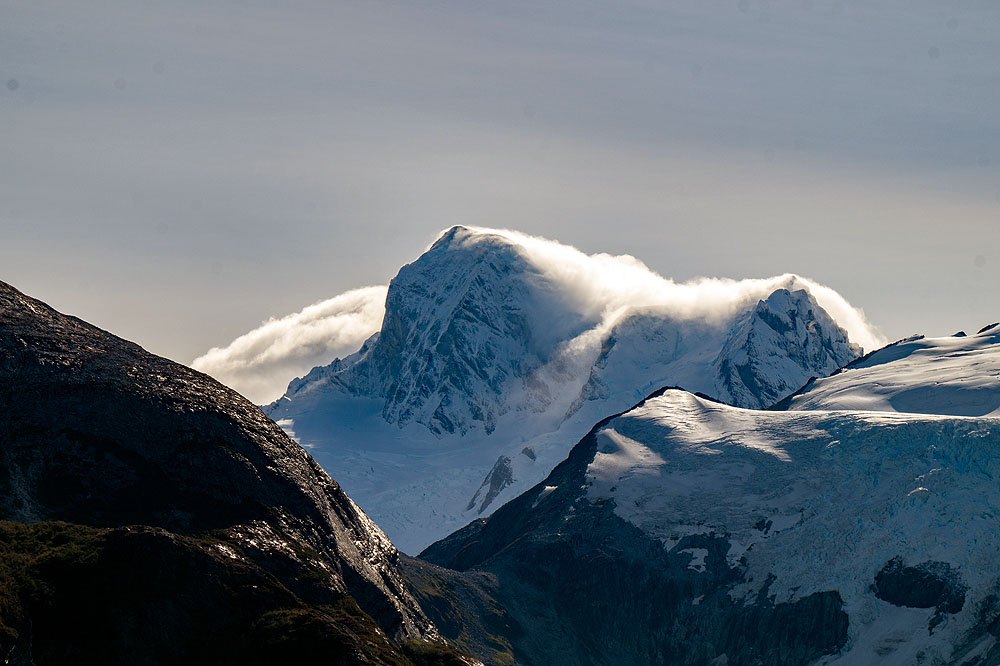The distant and isolated Tierra del Fuego ('Land of Fire') covers around 48,000km² and is known for its natural untouched beauty and dramatic landscapes. The island is split between Chile and Argentina at the southernmost extreme of the Americas, and whilst this means it is a long journey to get there, it is certainly worth the effort. If it isn't on your bucket list already, then read on to find out why it should be.
1. Follow in the footsteps of explorers
It wasn't until 1520 that the western world was introduced to this distant land. During a circumnavigation voyage, Ferdinand Magellan became the first European to navigate the strait (which was later named after him), and discover Tierra del Fuego. The inhabitants at the time, the Selk'nam and Yaghan people, wore little clothing and relied on fires to keep them warm, so as Magellan and his crew sailed towards this unknown shore they were greeted by a series of flames flickering in the distance. Hence, it was so aptly named the Land of Fire. Of course Magellan isn't the only famous adventurer that we associate with the region; plenty of others have sailed south in search of gold and anthropology, including Sir Francis Drake, Robert Fitzroy and Charles Darwin. Who wouldn't want to follow in the footsteps of some of the greatest explorers ever to roam our planet?
2. Flora and Fauna
With such a harsh climate, it's natural to think that Tierra del Fuego might be a desolate and windswept land with no signs of life. It is windswept - there is no denying that, but it is far from barren. The rugged coastline and grassy steppe is vivified by the scarlet red tones of native Calafate berry and Chilean firebush; the skies are filled with marine birds, swooping and diving to snag their dinner; and the woodlands and rivers shelter foxes and beavers respectively. Not only this, but Patagonia's emerald waters are home to penguins, sea lions, dolphins and whales. There is enough life to catch the attention of any naturalists or wildlife enthusiasts out there.
3. Reaching the end of the world - Cape Horn
At the southernmost tip of Tierra del Fuego (and in fact the southernmost tip of the entire continent) sits the 425 metre high plateau that is Cape Horn. In the history of maritime navigation, there are few routes that have been as attractive to sail as they have been dreaded, but rounding the Horn is one of them. It is a perilous waterway, where the Atlantic and Pacific Oceans collide in fury, marking the northern boundary of the infamous Drake Passage; and it is many a mariner's graveyard. I have to admit it's not the most obvious holiday choice, but what was once the ultimate quest for hardy explorers is now easier than ever (and much safer!) to reach. Those who get to land on Cape Horn can visit the monument which stands 22 feet high and was made to withstand winds of up to 200 miles per hour. It is dedicated to those who lost their lives whilst attempting to round the Horn. There is also a Chilean naval station and lighthouse, home to an officer and his family who you may be lucky enough to meet.
4. Awe-inspiring scenery
"A single glance at the landscape was sufficient to show me how widely different it was from anything I had ever beheld.. There was a degree of mysterious grandeur in mountain behind mountain, with the deep intervening valleys, all covered by one thick, dusky mass of forest" - Charles Darwin, The Voyage of the Beagle.
It goes without saying that the scenery is indescribably beautiful. This wild and rugged landscape is lined with rocky islets, snow-capped peaks, winding fjords and turquoise lakes. Nowhere is more captivating than the stunning Pia Glacier standing as tall as a skyscraper, or the entrancing journey along Glacier Alley, where the ice glows blue and the meltwater tumbles. For lovers of the great outdoors, few destinations can match the scale and sheer splendour of Patagonia.
The best way to explore Tierra del Fuego
Whilst it's possible to explore certain areas of Tierra del Fuego from Ushuaia, Punta Arenas or Puerto Williams, the best way to see the region is by boat. If like me you enjoy visiting remote corners of the globe but still appreciate comfortable accommodation and fine cuisine, an expedition with Cruceros Australis fits the bill perfectly. Cruceros Australis boats have been navigating the fjords of Tierra del Fuego, including the waters around Cape Horn, the Beagle Channel and the Strait of Magellan, since 1990. With expert guides and like-minded travellers, this adventure cruise enables passengers to venture to places that cars can't, and see the highlights of the region in just 4 nights. The cruise operates between Ushuaia and Punta Arenas (and vice versa) from September to April.
Cruceros Australis: www.lastfrontiers.com/hotels/chile/punta-arenas/crucerosaustralis
Go further
Tierra del Fuego is the final frontier of civilisation before the Andes dissipate into the ocean, and all that stands between you and the icy continent are the turbulent waters of the Drake Passage. If reaching the end of the world doesn't quite satisfy your appetite for adventure, then boarding a cruise to Antarctica surely will.
Antarctica cruises: www.lastfrontiers.com/antarctica/regions/cruises








Comments
Book by Lucas Bridges
A must read just to further stimulate the appetite!